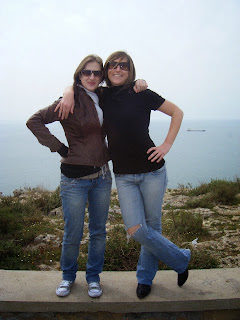Morocco is in many ways a country apart. It nestles on the northwestern tip of Africa, separated from the rest of the continent by the towering Atlas Mountains and by the Sahara itself. Its climate, geography, and history are all more closely related to the Mediterranean than to the rest of Africa, and for this reason visitors are often struck by the odd sensation of having not quite reached Africa in Morocco. In the north, its fine beaches, lush highland valleys, and evocative old cities reinforce this impression. Yet, as one moves south and east, into and over the starkly beautiful ranges of the Atlases, Morocco's Mediterranean character melts away like a mirage. The Sahara stretches out to the horizon, and forbidding kasbahs stare.
Location, Geography, and Climate
Morocco is situated on the extreme northwestern corner of Africa and is bordered by Mauritania and Algeria, both to the south and east.
Morocco's varied geography includes no less than four separate mountain ranges, in addition to lush river valleys, beautiful sandy coasts, and wide expanses of desert. The three most prominent mountain ranges, which run parallel to each other from the southwest to the northeast, are the Middle Atlas, the High Atlas, and the Anti-Atlas. The ascent of the country's highest peak, Jebel Toukbal (13,665 ft./4,165 m.), is a spectacular and not particularly difficult High Atlastrek. The Moroccan coastline, which fronts onto both the Mediterranean and the Atlantic, offers plenty of great beaches as well as a number of fascinating old coastal cities. In the southeast, Morocco's mountain ranges yield inexorably to the desolate expanse of the Sahara. The rivers that flow down this side of the High Atlas support long, narrow, and lush river valleys that resemble linear oases.
The climate in Morocco is reliably dry, although small amounts of rain do fall between November and March. Temperature varies considerably by season and locale. While the southern and southeastern desert regions can reach extremely high temperatures during the hot summer months, the higher altitudes of the mountains are cool in summer evenings and freezing in winter. Most travellers find the early summer months to be the most comfortable time to visit, as rain is not a threat and temperatures are warm during the day and pleasantly cool at night.
History & Culture
Morocco's history began with the Berbers, the aboriginal people who have inhabited the country since the end of the 2nd millennium BC Rome extended its rule over the area after defeating Carthage in 146 BC, and testimony to its presence still exists in the fine Roman ruins at Volubilis. As Rome fell into decline Morocco was invaded first by the Vandals and then, in the 7th century, by the Arabs. Although external Arab rule lasted little more than a century, the arrival of Islam proved to be a permanent addition to Moroccan culture. In the ensuing centuries a series of ruling dynasties came to power, including the Idrissids, the Almoravids, and the Almohads, but none seemed capable of long maintaining the critical support of the Berber leaders.
By the 15th century Spain and Portugal began to intrude into Morocco, after having expelled the Moors from their own lands. Although Morocco successfully repulsed these invasions, the tide of European imperialism eventually proved too great. By the middle of the 19th century Morocco's strategic importance had become evident to all of the European powers, and they engaged in a protracted struggle for possession of the country. Finally, in 1911, France was formally acknowledged as protector of the greater part of the country, with Spain receiving a number of isolated locales. French rule came to an end in 1953, although its cultural influence on Morocco remains strongly in evidence. Today the country is ruled by King Mohammed VI. He appears to be leading Morocco toward both long-term stability and a greater degree of economic prosperity.
land of spice-scented mystery and medieval kasbahs, Morocco puts your senses on high alert. The country is a magic carpet ride of extremes, from the searing Sahara to the snow-dusted High Atlas Mountains; from Marrakech's thronging medinas to petal-strewn serenity in a Fez riad. It's a place where spirituality rises with the first adhan (call to prayer), where cities are urban labyrinths and where runaway donkeys rule the souks. Bring a sense of adventure, a talent for haggling and patience for the long, bumpy but thrilling ride.
Cities
Ancient and modern collide in the tree-fringed boulevards of the European-flavored capital, Rabat. Trace the Atlantic coast north to Tangier for colorful street life and glimpses of Spain. Head south to bustling Art Deco port and silver-screen legend Casablanca. The symmetry of Hassan II, the largest mosque outside Mecca, is breathtaking. Inland, the imperial cities of Marrakech and Fez whisk you back to the Middle Ages, where donkey carts rattle down the streets of walled medinas.
Countryside
With snow, the Sahara and everything in between, it's no wonder Morocco is synonymous with outdoor adventure. Hike the color-changing peaks, mudbuilt kasbahs and time-locked Berber villages of the High Atlas Mountains. An old caravan route leads to the enigmatic fortified city Aït Benhaddou, of Lawrence of Arabia fame, which glows red at dusk. In winter, take to the slopes of Oukaïmeden, Africa's highest ski resort (2,600m). Ride the rippling dunes of Saharan Morocco by 4x4 or camel hump.
Coast
Spain is sometimes glimpsed from the coves along the northern Mediterranean coast, backed by the snow-capped Rif Mountains. Pummelled by Atlantic surf, the west coast takes you to Casablanca's cafe-lined Corniche and Agadir's ever-popular sweep of golden sand. Today there are more wave-crazy surfers than hippies in Taghazout and whitewashed Essaouira. In the latter, ride a camel along the beach as the setting sun silhouettes Borj el-Berod, the sinking ruins said to have inspired Jimi Hendrix's Castles Made of Sand.







































